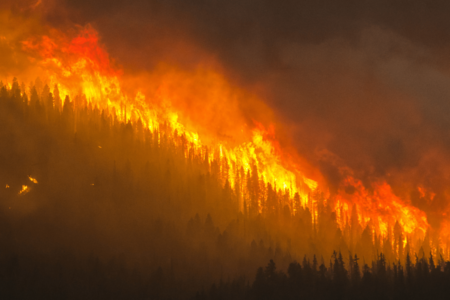Mexico's Lerma River is Dying
By Andrea Arzaba
The Lerma Santiago River (commonly known as “Rio Lerma”) is Mexico’s second longest river. At the same time, it used to be a source of drinking water for the capital and the central part of the country. During the 17th and 18th centuries, large haciendas were established along this river. Unfortunately, today this river is dying.
Fatally infected by a considerable number of sources of pollution (like factories), millions of dollars have been used in efforts to revive and clean it, without many positive results.
The blog agendahidalguense [es], quotes Mexican president Felipe Calderón when he talked about the importance of becoming a country where water cleaning is one of the most important issues in the national agenda:
Schuldes Dávila recordó que desde el 26 de marzo del presente año, el Lic. Felipe Calderón Hinojosa, hizo un llamado a todos los actores a involucrarse en el uso, manejo y preservación del recurso agua, para que juntos construyamos esta Agenda del Agua, que sin duda marcara la historia de nuestro país, mencionó que es necesario alcanzar un México limpio, donde el 100 por ciento de las aguas residuales sean tratadas. Un México donde toda la población, disponga de agua potable. Un México responsable con el medio ambiente, que preserve el equilibrio, no sólo de los acuíferos, sino de sistemas y microsistemas ambientales completos.
Schulden Davila recalled that since March 26 of this year, Felipe Calderon Hinojosa called on all actors to get involved in the use, management and preservation of water resources, and together build a Water Agenda, which will undoubtedly mark the history of our country. He also mentioned that it is necessary to achieve a clean Mexico, where 100 percent of wastewater is treated. A Mexico where the entire population gets access to drinking water. A Mexico responsible to the environment, where we preserve the balance not only of the aquifers, but full environmental systems and microsystems.
Pollution
According to the article “No Funds for Dying River Basin,” written by Patricia Vega Villavicencio’s and published on the ISP news website, large amounts of money have been spent in cleaning the river, with little results :
In the last 16 years, the local government of Mexico state, which borders on the federal district of Mexico City, has spent 714 million dollars on wastewater treatment plants and has only managed to clean up 27 percent of the 125 kilometres of the Lerma’s course across the state.
It is well known among local people that the river is contaminated, as there are important industries and factories in the same area (those that produce meat, dairy, beverages, pulp and paper, leather goods, petrochemical and chemical products) and throw their wastes to the river. Later in the article, Vega Villavicencio continues:
There appears to be no prospect for a cessation of hostilities on the Lerma River. Environmentalists have calculated that 90 percent of its waters are contaminated, and they predict that no recovery will be possible unless strategies are changed.
Jim & Carole’s Mexico Adventure explains:
Over many years, the Lerma has been sapped of its upstream water for agricultural purposes. It has also been the recipient of large amounts of industrial pollutants from factories along its course, as well as the runoff of agricultural chemicals.
The blog Cazador de la Verdad [es] (Hunter of the Truth) posted two videos showing the effects of pollution on the river.
Consequences
Lerma River pollution is costing a high price, or even an unmeasurable one, as several publications have reported that people living close to it have been physically affected.
In 2007, blogger Kristan Taylor from the blog Toluca Gringa shared her personal encounters with the river:
I’d smelled it before, every time I pass to go to Mexico City. It’s especially foul at night, when the factories dump their deshechos into the water without blinking an eye. Thanks, Nestle. Powdered chocolate is criminal enough. Now this? I went there in the light of day recently. Within 10 minutes I felt a curious burning in the back of my throat. No joke. My eyes stung for a couple hours after I left. There’s nothing in the water. Nothing alive, at least, with the exception of some mutant strain of something that can manage to survive the puss-bubble water whose surface reminded me of the last time I had a 3rd degree burn on my skin.
Periódico El Sur [es] (South Journal) published an article where it confirms that there has been “a noticeable increase in deaths caused by cancer” because of the pollution in the Lerma River.
In another journal, La Jornada [es] from Michoacan, author Celic Mendoza wrote:
Varios niños que viven en la cuenca, han presentado diversos cánceres como leucemia a consecuencia de la contaminación del afluente.
There have been cases of cancer (leukemia) in children, as a result of pollution caused by industries that shed substances into the river.
Researcher Jeff Conant wrote an article published by the Earth Island Journal [es], where he tells a tragic story:
In January 2008, an eight-year-old boy named Miguel Angel Lopez Rocha fell into the Santiago River near the El Salto Falls. The boy was rescued immediately, but within two days, he had fallen ill. Nineteen days later, he was dead. One medical report said the cause of death was septicemia, a general term for a septic infection of the blood. Another autopsy indicated heavy metal poisoning; arsenic in Miguel Angel’s blood was 10 times the fatal dose. The boy’s death caused a shock and brought revived attention to one of Mexico’s worst environmental disasters.
But humans are not the only ones affected by this, as La Jornada reports in another article:
Miles de peces murieron en el río Lerma, a la altura de la comunidad Cuatro Milpas, debido a la severa contaminación que padece el afluente, señalaron grupos ambientalistas, mientras que autoridades municipales, estatales y federales sostuvieron que el fenómeno se debió a “un fenómeno natural, a consecuencia de la falta de oxigenación”.
Thousands of fish died in the Lerma River, at the level of the Cuatro Milpas community due to the severe pollution suffered by the affluent, as environmental groups said. Municipal and federal authorities confirmed that the phenomenon was due to a natural phenomenon, consequence of a lack of oxygen.
Finally, this YouTube video [es] posted by user natitachulita shows the current situation of the Lerma River. It is called “Agua para Llorar”[es], meaning “Water for Crying.”
This article originally appeared in Global Voices.

























Comments